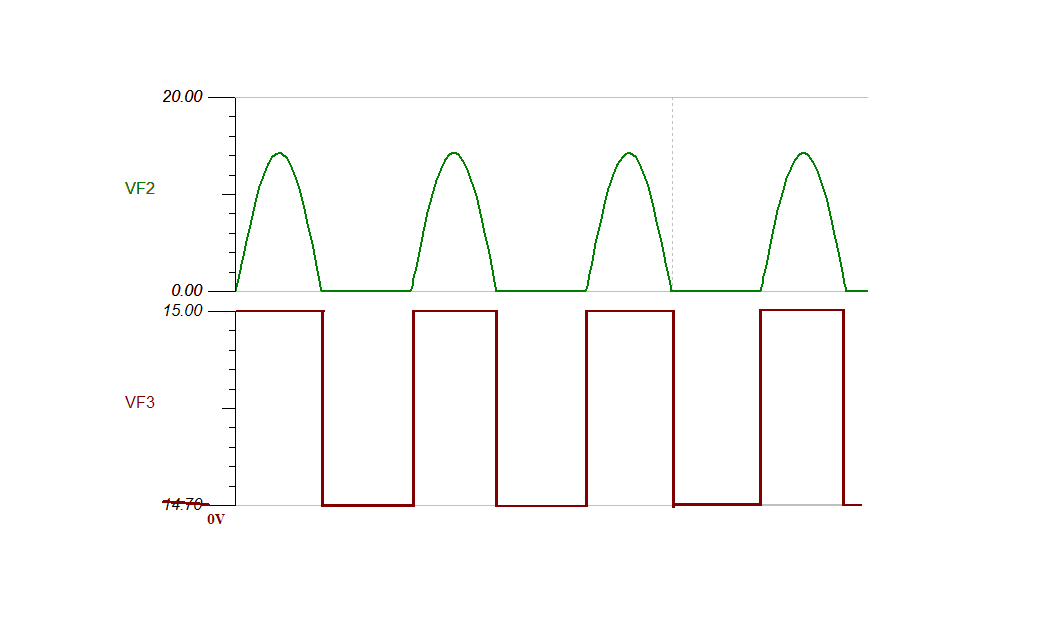Hi,
I want to do a zero detection on the main voltage (in France, 230Vac and 50Hz). Before doing it in real, I try to do it with simulation.
This is my design:
VF2 is ok, but VF3 is not.
On the output (VF3), I want this signal :
How must I do?Change the comparator? The design?
Thing that I can't change is only TR1. And my power supply is 15V. On the output, maximum level is +15V.
I don't need a lot of current on the output, 10mA is enough.
Thanks for your help.
Regards,
Florian


